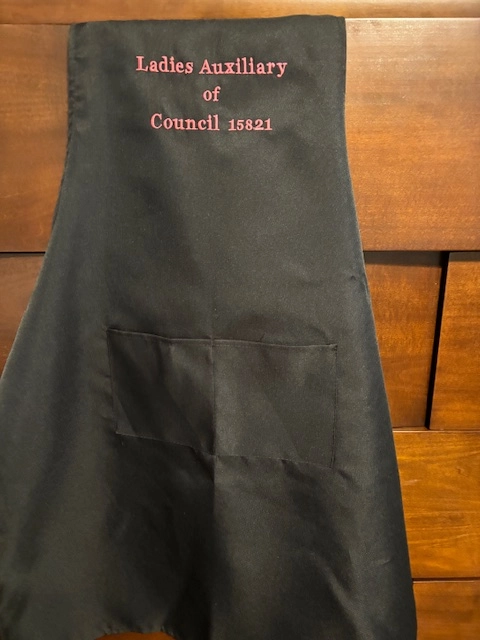Sophisticated Monogramming on Towels for a Touch of High-end
Sophisticated Monogramming on Towels for a Touch of High-end
Blog Article
The Art of Custom-made Needlework: Opening the Keys to Creating Unique and Unforgettable Styles
The secrets to creating custom-made embroidery layouts that captivate the eye and leave a lasting impression lie in a delicate equilibrium of technique, creativity, and focus to information. As we dig into the globe of customized needlework, we discover the nuanced interaction between thread option, sew intricacy, and design personalization that raises a plain garment to a work of art.
Choosing the Right Embroidery Threads
When selecting needlework strings, what crucial variables should you think about to make sure the very best results for your custom-made layouts? The option of needlework thread is crucial in determining the last outcome of your stitched design. One of the primary considerations is the material of the string. Different materials such as cotton, polyester, rayon, and silk supply varying levels of luster, toughness, and structure. It is necessary to choose a string material that enhances the material you are embroidering on and straightens with the wanted appearance of the style.
Thicker strings can add dimension and texture to your design, while finer strings are excellent for elaborate information and little text. Additionally, considering the shade fastness and washability of the string is important to guarantee that your personalized layouts maintain their top quality and vibrancy over time.
Checking Out Different Stitch Techniques
To look into the realm of 'Discovering Different Stitch Methods', one need to realize the complexities and subtleties that each sewing technique offers the art of embroidery. Different stitch strategies not just add aesthetic interest yet likewise add to the general appearance and dimension of the design. One prominent stitch strategy is the satin stitch, which entails closely jam-packed parallel stitches to develop a smooth and glossy surface, ideal for completing shapes and creating bold describes.
On the other hand, the backstitch is a functional strategy commonly used for laying out and including fine details. It involves stitching backwards to create a strong line of needlework. Furthermore, the French knot stitch includes a responsive aspect to designs, best for creating distinctive accents like blossom centers or ornamental touches.
Checking out different stitch methods allows embroiderers to play with light, shadow, and depth within their layouts, elevating the aesthetic appeal and artistic quality of their needlework jobs. By understanding various stitching approaches, one can unlock endless possibilities for creating distinct and remarkable custom embroidery pieces.
Incorporating Personalized Design Aspects
Having explored the ins and outs of various stitch strategies such as the satin stitch, backstitch, and French knot, the emphasis currently changes towards including customized style elements in custom embroidery projects. Individualized layout aspects play a vital function in making embroidery tasks really distinct and remarkable. One method to include personalization is by including initials, names, or significant dates to the layout. This not only adds a personalized touch but additionally enhances the nostalgic value of the embroidery piece.
An additional means to integrate personalized design aspects is by including icons or themes that hold special definition to the recipient or reflect their passions and individuality. For instance, integrating a favored flower, pet, or hobby-related icon can make the needlework design more significant and tailored. In addition, selecting colors that reverberate with the recipient or align with the desired style can better enhance the customization of the needlework project.
Grasping the Art of Color Sychronisation

One secret element of color control is recognizing color theory. This consists of recognizing how various shades communicate with each other, the emotions they convey, and how they can be incorporated to develop visually attractive designs. By applying shade concept principles, embroiderers can create unified color palettes that enhance the overall look of the layout.
In addition, focusing on comparison is crucial in shade coordination. Making use of contrasting colors can help specific aspects of the layout pop, improve readability, and produce a visually vibrant embroidery item. By grasping the art of color control, embroiderers can raise their layouts and produce remarkable pieces that reverberate with customers and viewers alike.
Enhancing Texture With Advanced Embroidery Stitches
Bullion knots, on the other hand, can why not find out more be utilized to develop twisted, ropelike elements that add a glamorous feel to the needlework. Trying out with these sophisticated needlework stitches permits you to push the boundaries of traditional embroidery and produce genuinely distinct and visually appealing appearances in your designs.
Verdict
To conclude, the art of custom embroidery entails a combination of picking the ideal threads, discovering different stitch methods, including personalized design elements, grasping color control, and enhancing appearance with advanced stitches. By recognizing and applying these crucial elements, embroiderers can develop distinct and unforgettable layouts that showcase their creativity and skill. Embroidery lovers can open the keys to developing beautiful and bespoke items that stand apart and leave a long-term impression.
Report this page